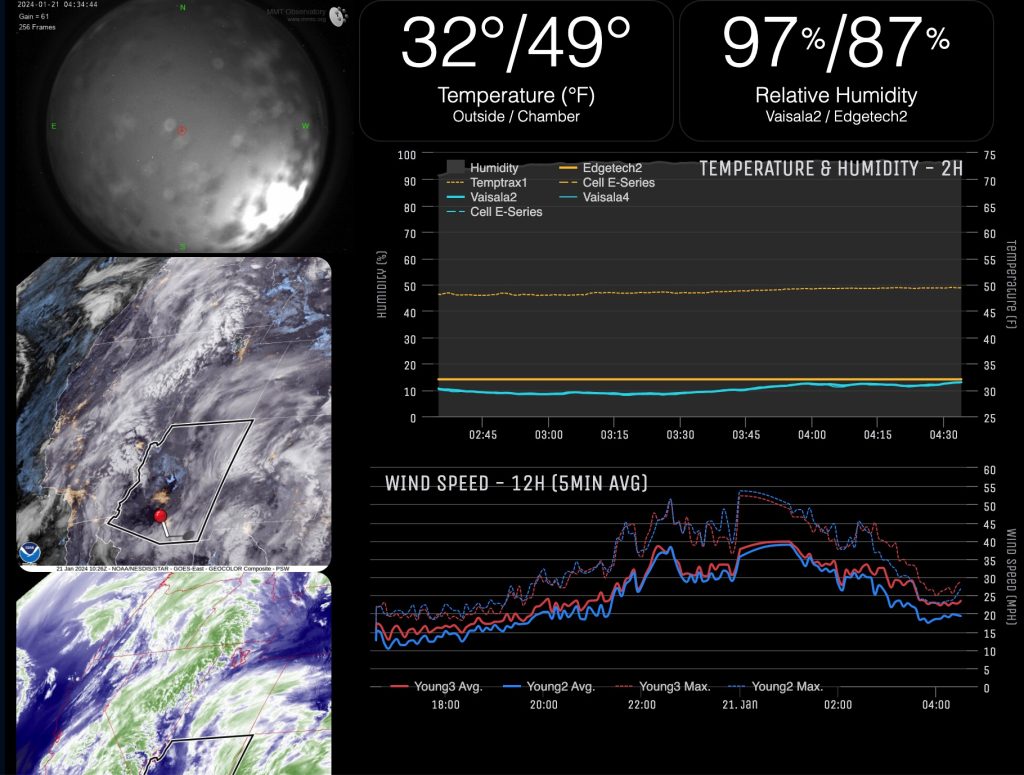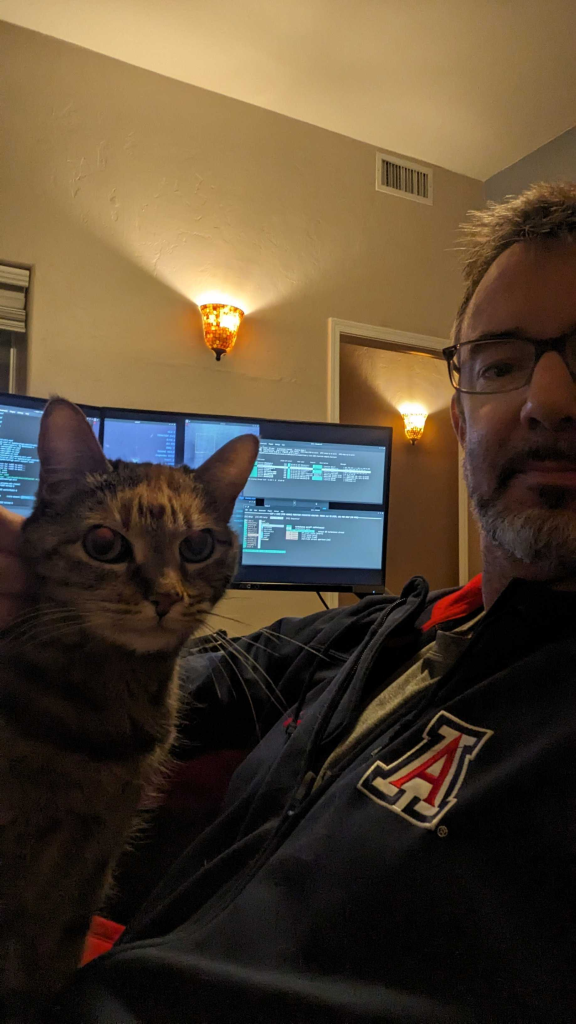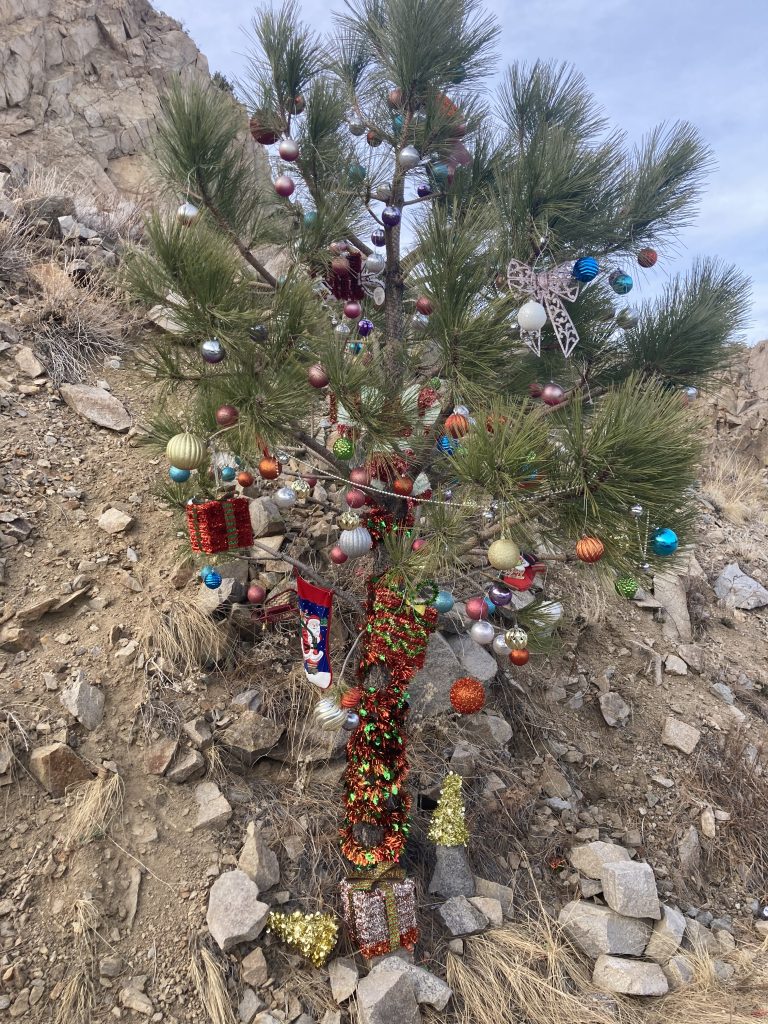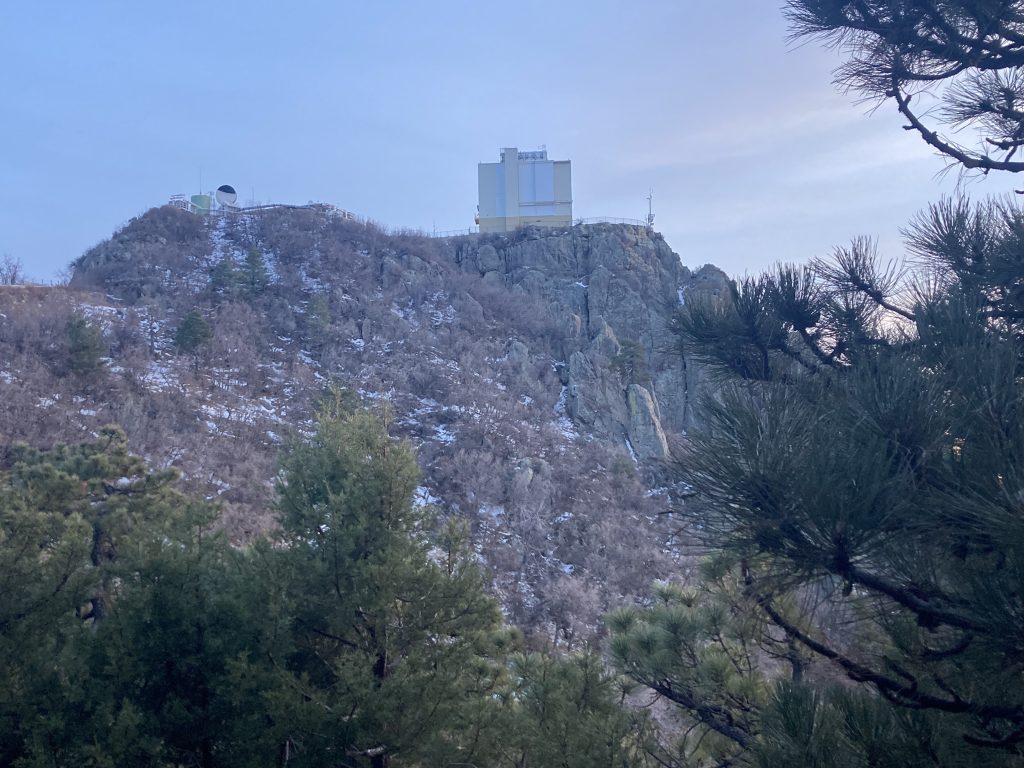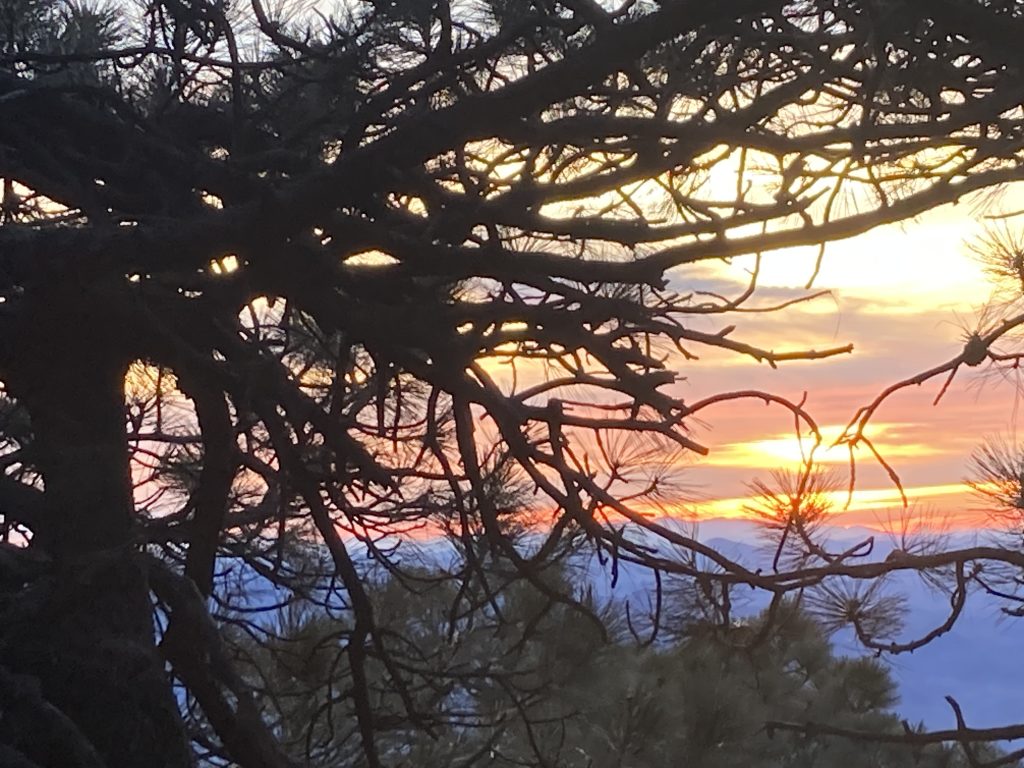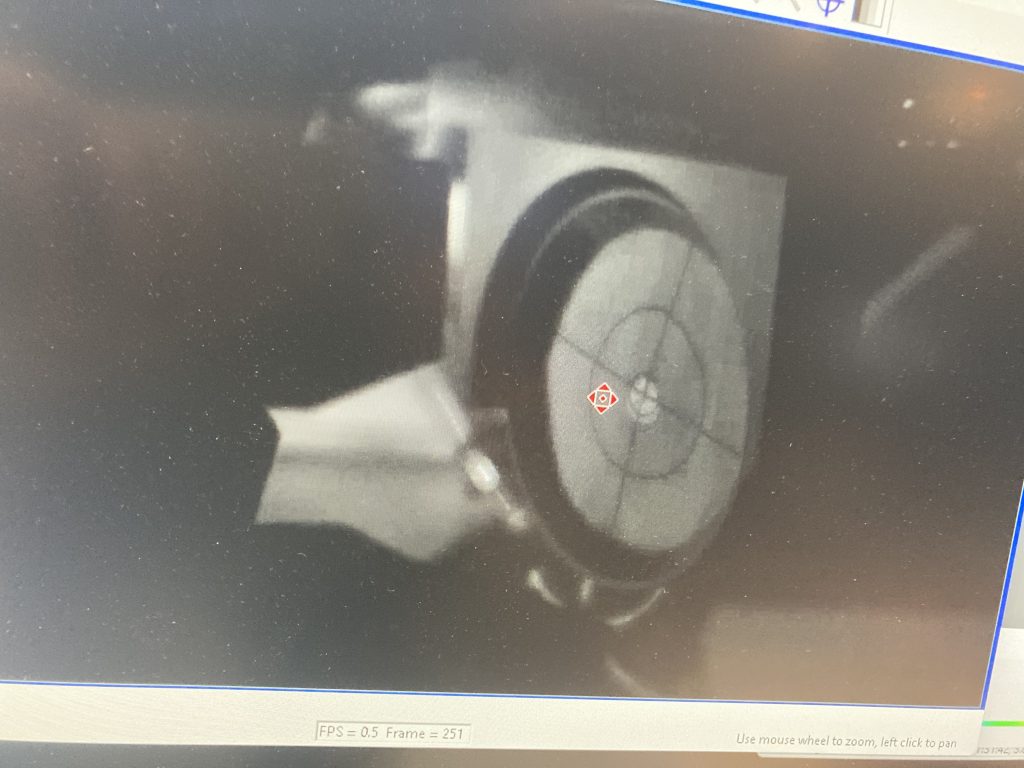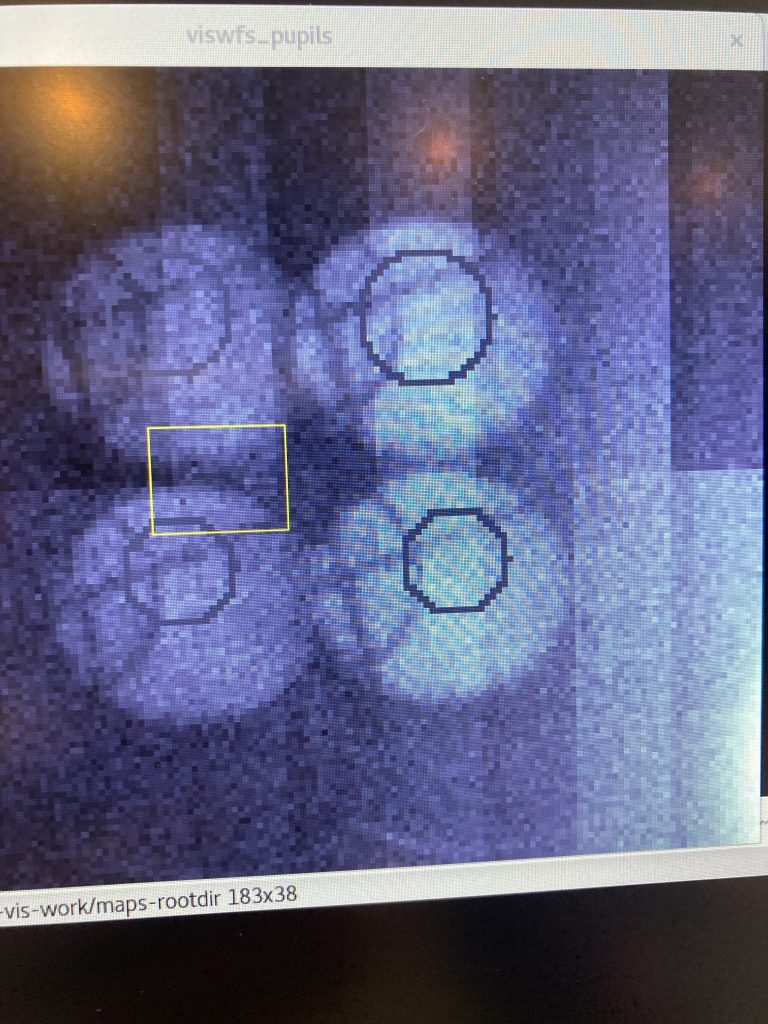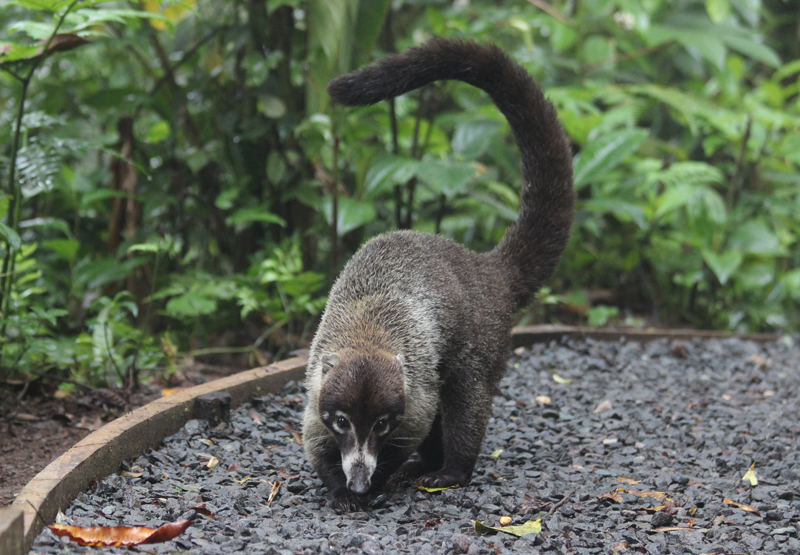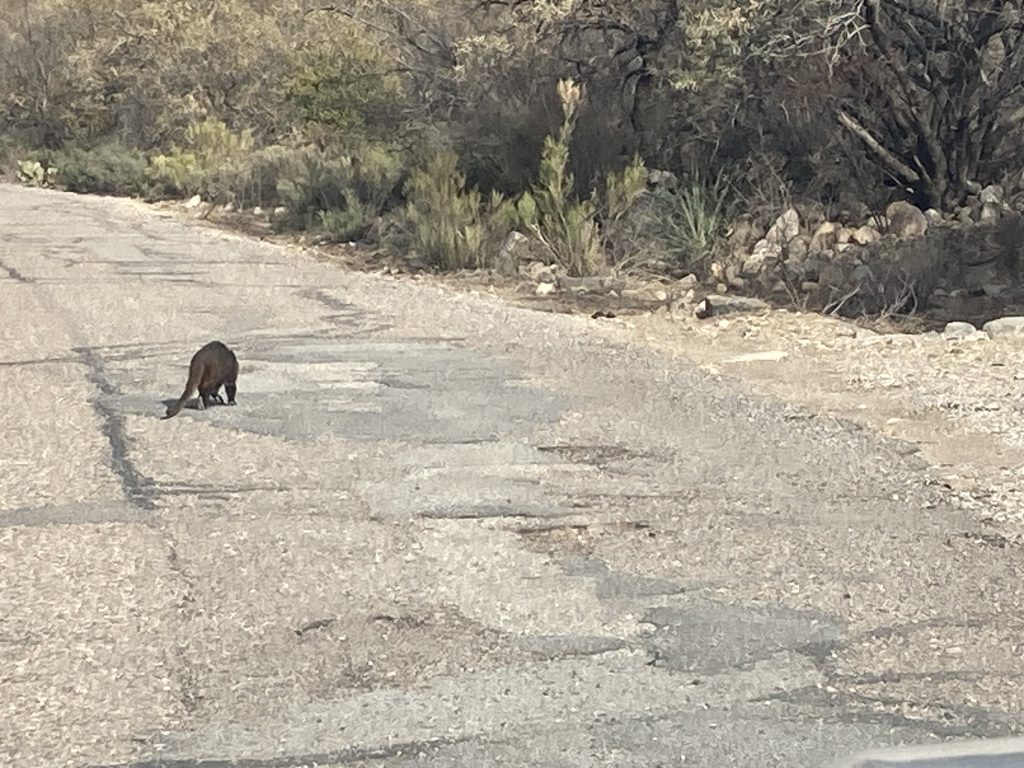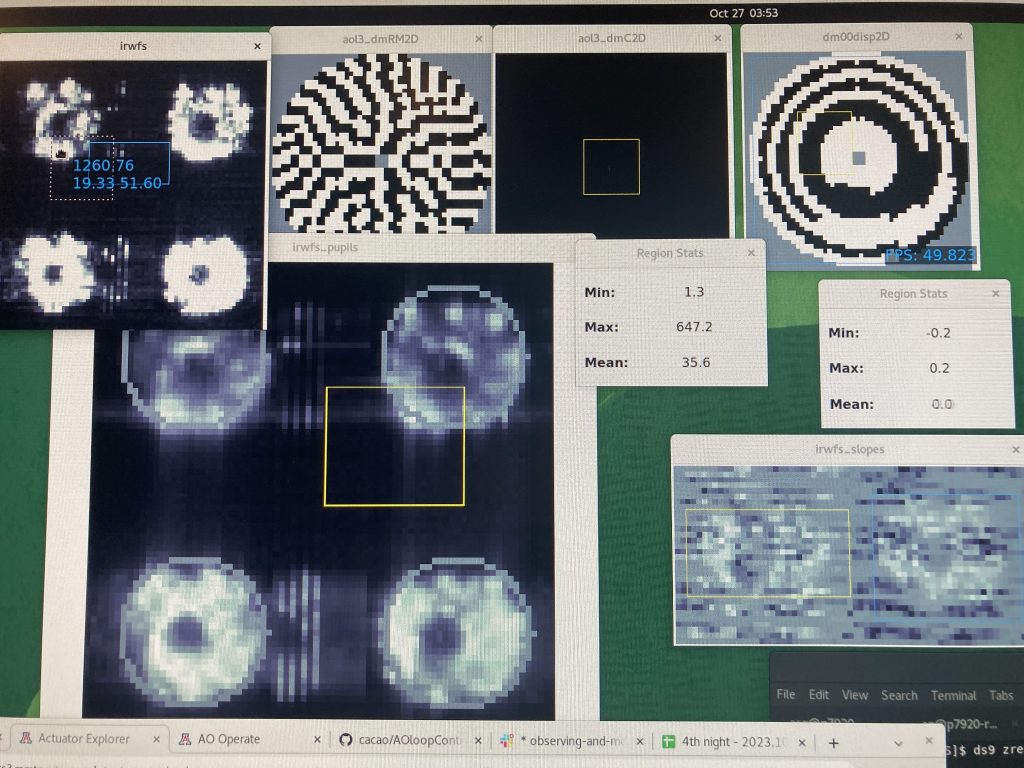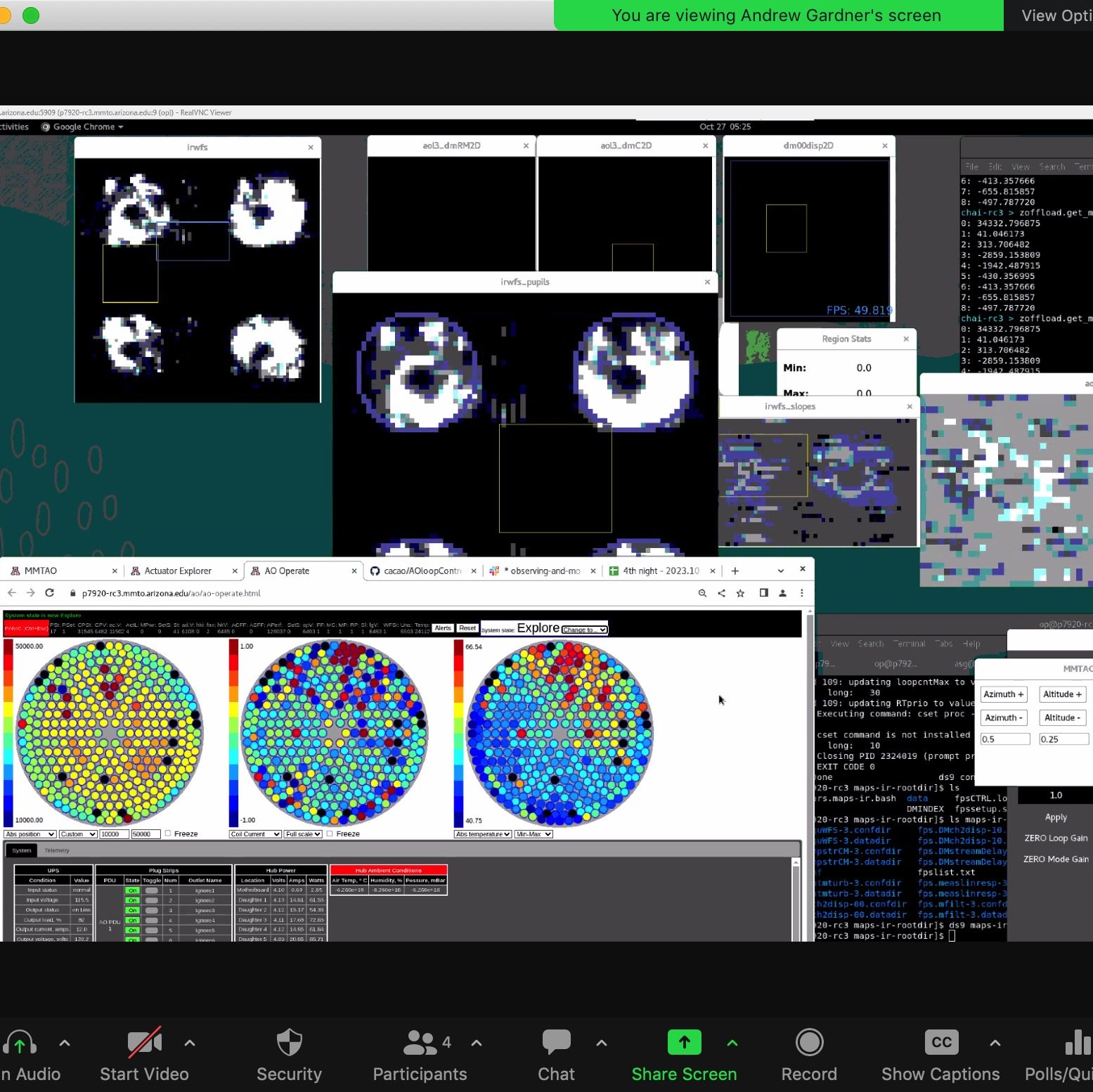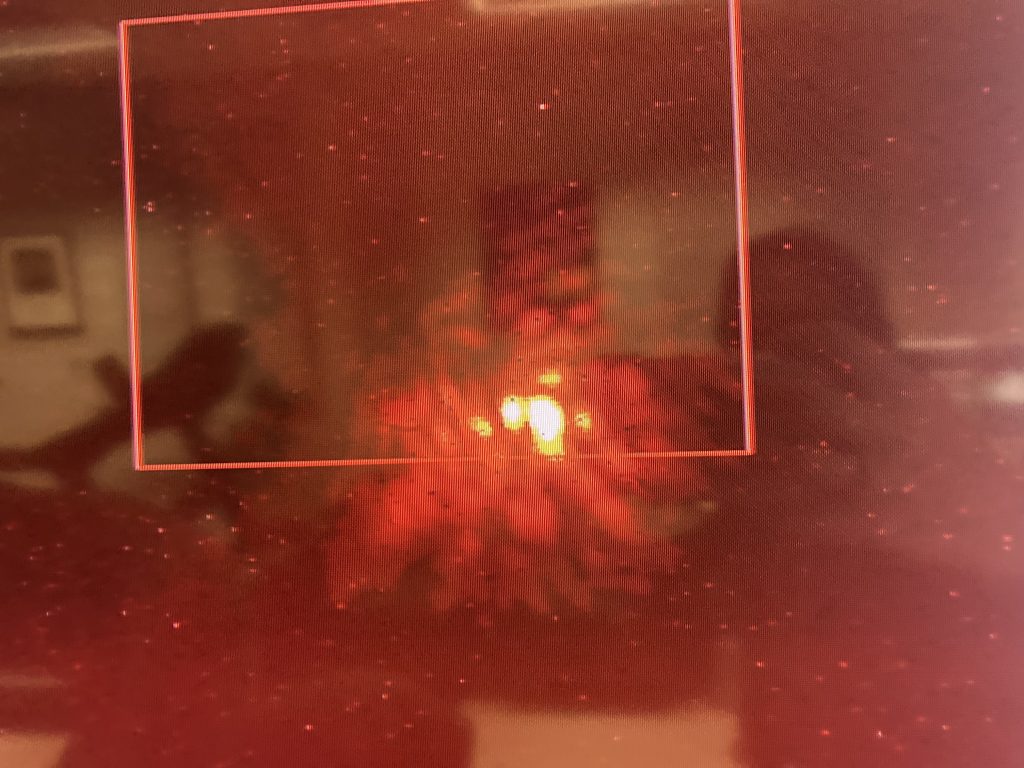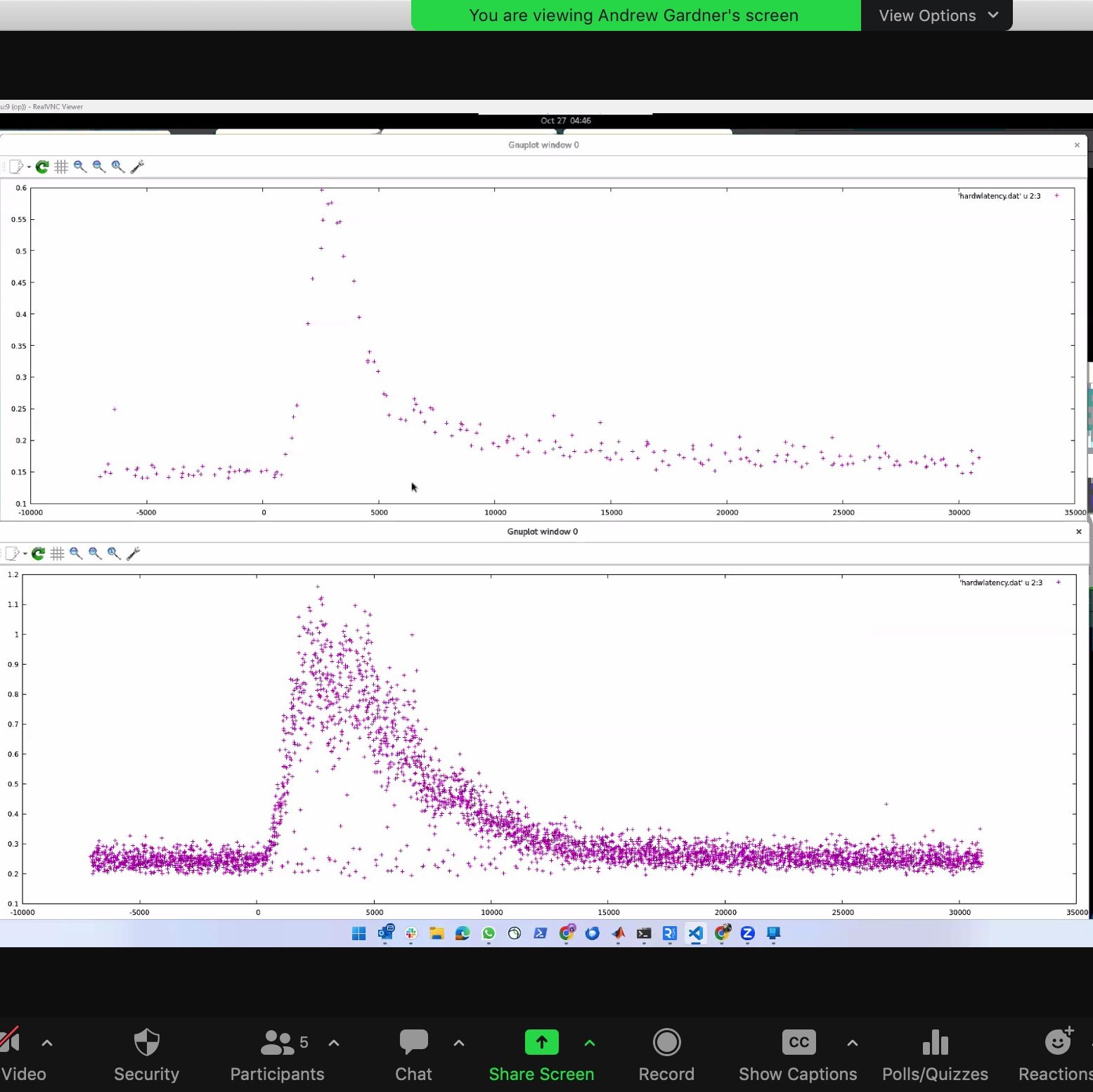While the MagAO-X run is going on in Chile, your friendly neighborhood MAPS/MIRAC team has just summited Mt. Hopkins to run CACAO and take data on this side of the planet. We spent a lot of time trying to align our pupil planes and focal planes and WFS and science camera.
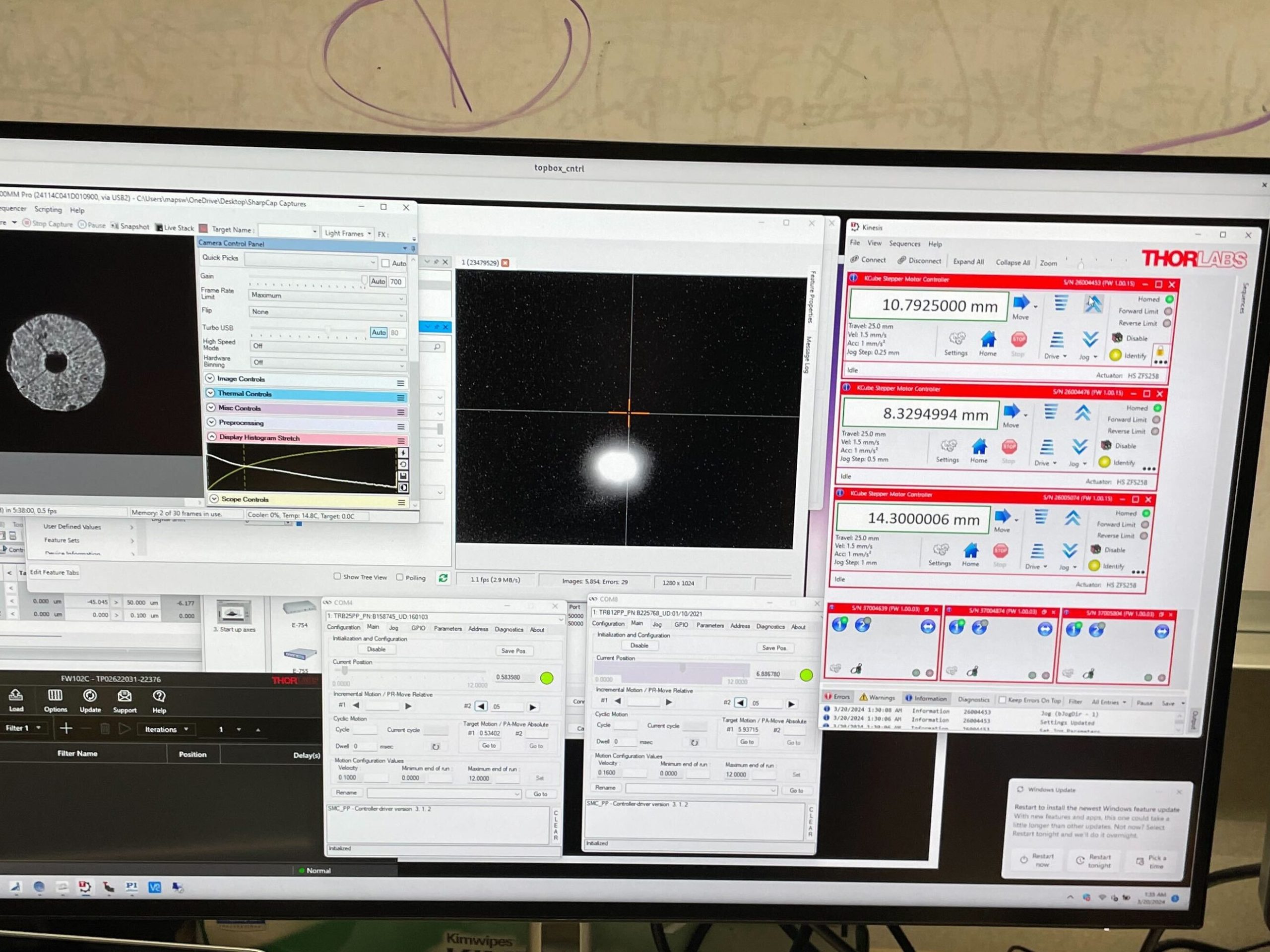
The MIRAC pupil was still misaligned so we went to zenith, lifted the platform to rest the instrument’s weight, loosened the bolts, and tried to nudge MIRAC over. But we weren’t able to move it far enough to shift the pupil.
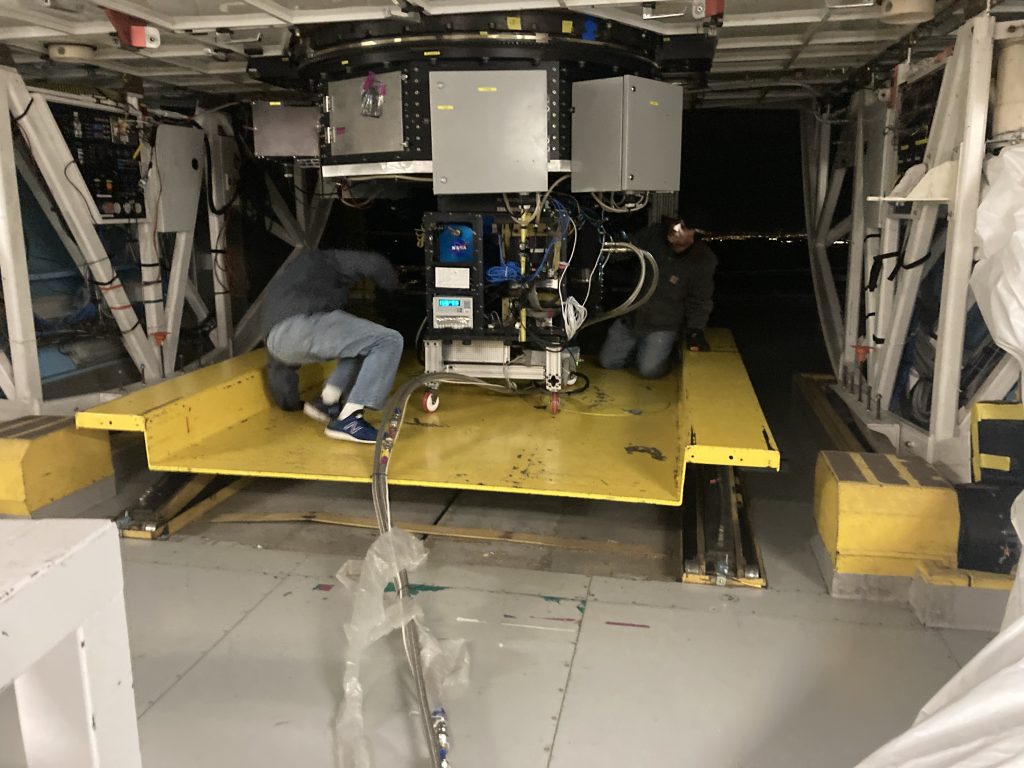
At this point thick clouds had rolled in (quote of the day: “If you can no longer see the moon, it’s cloudy!” –Amali). We waited it out a while, but eventually called it a night around 4am.
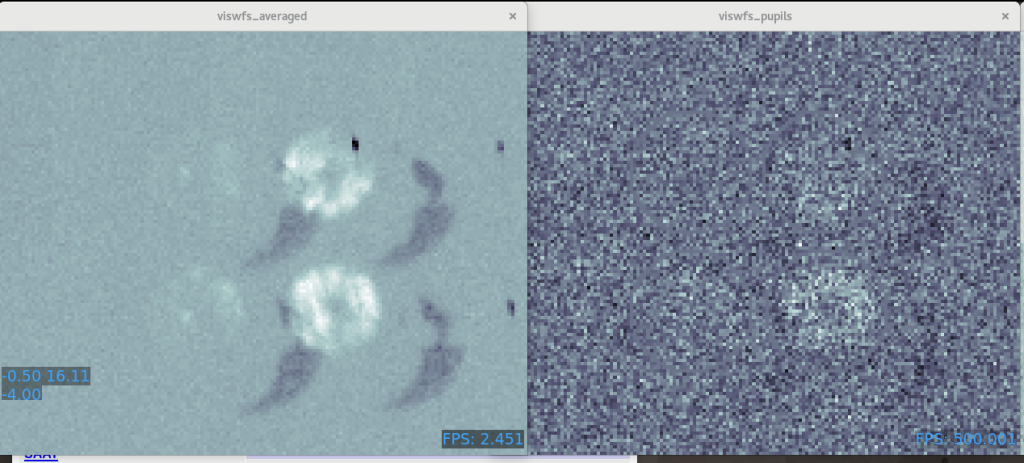
Today was Rory’s birthday — Happy birthday Rory! We celebrated with cake(s).
The song of the night is Happy Birthday to You.



